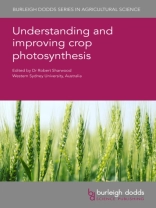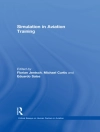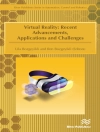- Provides a comprehensive review of the wealth of research which addresses how to sustainably achieve higher yields through improving the rate of C₃ photosynthesis in crops
- Assesses current practices implemented to optimise photosynthesis in crops, including the modification of crop elements such as leaf/canopy architecture
- Explores our understanding of the biophysics, biochemistry and genetics of C₃ photosynthesis in crops and how this can be used to improve photosynthesis in C4 and C₃ crops
Table of Content
Part 1 General
1.Understanding the biochemistry of C₃ photosynthesis in crop plants: C. A. Raines, A. P. Cavanagh, C. Afamefule, K. Chibani, H. Gherli, P. Lopez, V. Mengin, B. Moreno-García and S. Wall, The University of Essex, UK;
2.Understanding the genetics of C₃ photosynthesis in crop plants: P. Carvalho, G. Elias da Silva and N. J. M. Saibo, Instituto de Tecnologia Química e Biológica António Xavier da Universidade Nova de Lisboa (ITQB NOVA), Portugal;
Part 2 Improving photosynthesis: light harvesting
3.Interactions between photosynthesis and the circadian system: Marina Viana Queiroz, Universidade de São Paulo, Brazil; and Martin William Battle and Matthew Alan Jones, University of Glasgow, UK;
4.Modifying photosystem antennas to improve light harvesting for photosynthesis in crops: Min Chen, The University of Sydney, Australia; and Robert E. Blankenship, Washington University in St Louis, USA;
5.Relaxing non-photochemical quenching (NPQ) to improve photosynthesis in crops: Johannes Kromdijk, University of Cambridge, UK and Carl R. Woese Institute for Genomic Biology, University of Illinois at Urbana-Champaign, USA; and Julia Walter, University of Cambridge, UK;
6.Modifying mesophyll conductance to optimise photosynthesis in crops: Coralie E. Salesse-Smith, University of Illinois at Urbana-Champaign, USA; Steven M. Driever, Wageningen University and Research, The Netherlands; and Victoria C. Clarke, The Australian National University, Australia;
7.Modifying canopy architecture to optimize photosynthesis in crops: Anthony Digrado and Elizabeth A. Ainsworth, Global Change and Photosynthesis Research Unit, USDA-ARS and University of Illinois at Urbana-Champaign, USA;
Part 3 Improving photosynthesis: optimising chloroplast function/light conversion
8.Modifying photorespiration to optimize crop performance: Xinyu Fu, Kaila Smith, Luke Gregory, Ludmila Roze and Berkley Walker, Michigan State University, USA;
9.Maximizing the efficiency of ribulose bisphosphate (Ru BP) regeneration to optimize photosynthesis in crops: Thomas D. Sharkey, MSU-DOE Plant Research Laboratory, Michigan State University, USA;
10.Improving proteins to optimize photosynthesis: James V. Moroney, Ashwani K. Rai, Hiruni Weerasooriya and Remmy Kasili, Louisiana State University, USA; and Marylou Machingura, Georgia Southern University, USA;
About the author
Lisa Ainsworth is the Research Leader of the USDA ARS Global Change and Photosynthesis Research Unit and Professor of Plant Biology at the University of Illinois Urbana-Champaign. She has held leadership roles in the American Society of Plant Biologists, the International Society for Photosynthesis Research and the American Association for the Advancement of Sciences. In 2019, Lisa was awarded the National Academy of Sciences Prize in Food and Agricultural Sciences and was an elected member of the National Academy of Sciences in 2020.












